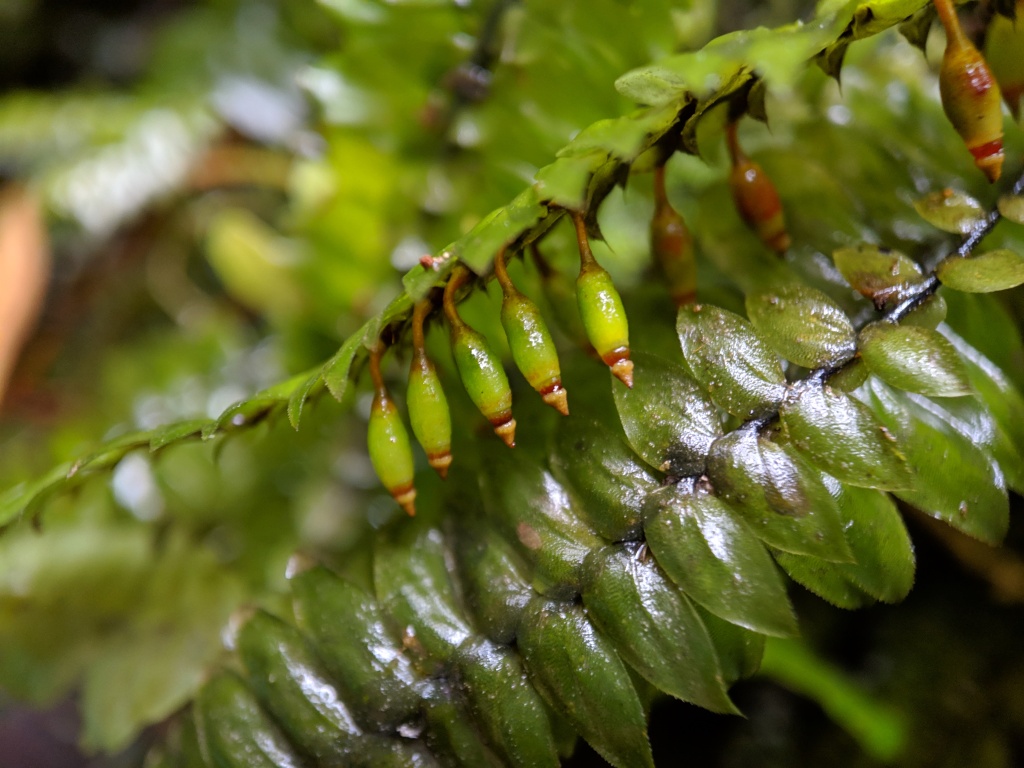Cyathophorum bulbosum
(Hedw.) Müll.Hal.Asexual reproduction by filamentous gemmae borne on stems in apical half. Loosely gregarious to isolated stems arising from soil, rocks, logs, tree fern or tree trunks, sometimes submerged, pale to dark green, sometimes olive-green. Stems to 25 cm long, usually quadrangular, occasionally somewhat terete, blackish brown at base, becoming brown or green toward apex. Leaves flat; margins serrate, dentate or rarely ciliate; marginal teeth 1–4 (–7)-celled, to 150 (–400) μm long; border absent or distinct near leaf base and faint and interrupted toward apex, up to 5 cells wide; costa extending 16–50% of lamina length, sometimes absent or short and double; laminal cells hexagonal to rhomboid-elliptic, 45–205 μm long, 20–50 μm wide. Lateral leaves ovate to lanceolate, 3–10.5 mm long, 1–4 mm wide; apices curling inwards when dry, rounded to acuminate. Ventral leaves appressed or occasionally erect-patent, orbicular to oblong, 1–4 mm long, 0.5–4 mm wide; apices apiculate. Setae 0.8–3 mm long, orange-brown. Capsule subglobose to ellipsoidal, 1.2–2.3 mm long. Cilia usually present, sometimes absent. Operculum long-rostrate, c. 0.8 mm long.
VVP, GipP, OtP, CVU, GGr, EGL, EGU, WPro, HSF, HNF, OtR, Strz, HFE, VAlp. New Zealand and New Guinea. Also QLD, NSW, ACT and Tas. Very common and conspicuous in fern gullies near creeks in wet sclerophyll forest and rainforest, mostly south of the Great Dividing Range, with occasional records along the Great Dividing Range.
 Spinning
SpinningKruijer, H. (2002). Hypopterygiaceae of the world. Blumea supplement 13: 1–388.
Kruijer, H. (2006). Hypopterygiaceae, in McCarthy, P.M. (ed.), Flora of Australia, vol. 51, pp. 377–388.. ABRS and CSIRO, Canberra and Melbourne.

